
SpaceX has successfully chalked up its first-ever eight-launch month, following Wednesday’s rousing 4:01 p.m. EDT liftoff of a veteran Falcon 9 booster from storied Space Launch Complex (SLC)-40 at Cape Canaveral Space Force Station, Fla. Riding a pillar of golden flame in the mid-afternoon sunshine, B1077—which previously launched four humans from three nations, as well as the powerful Inmarsat-6 F2 geostationary communications satellite and the U.S. Space Force’s sixth Block III Global Positioning System (GPS)— delivered a “batch” of 56 Starlink internet satellites into low-Earth orbit.
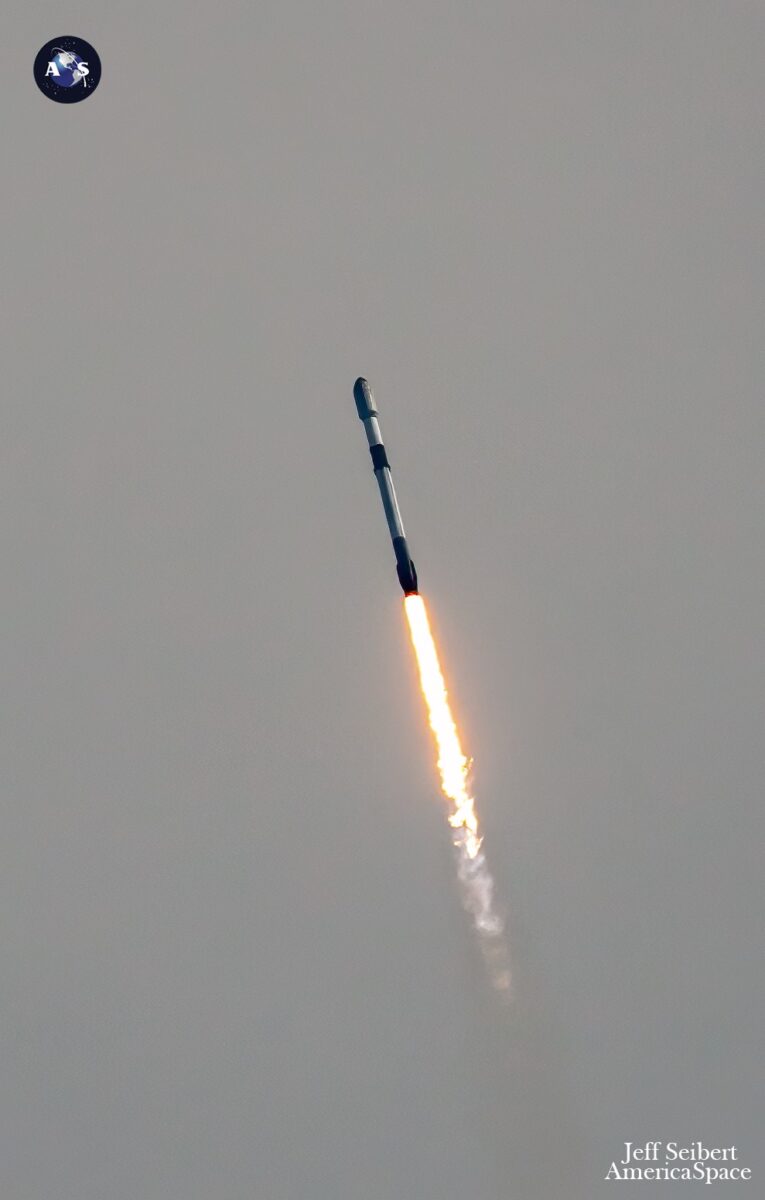
Preparations for today’s mission entered high gear last weekend, when the Autonomous Spaceport Drone Ship (ASDS), “Just Read the Instructions”, put to sea out of Port Canaveral, bound for a recovery location about 410 miles (660 kilometers) offshore in the Atlantic Ocean. It would mark JRTI’s third Falcon 9 “catch” of this month alone, following the retrieval of boosters from the launch of Dragon Endeavour and Crew-6 on 2 March and the dual-stacked SES-18/SES-19 communications satellites on the 17th.
For her part, B1077 was embarking on the fourth flight of a steadily glittering career which began last 5 October, when she lifted Dragon Endurance on the first leg of her trek to the International Space Station (ISS). Aboard Endurance were NASA astronauts Nicole Mann and Josh Cassada, Japan’s Koichi Wakata and the first Russian cosmonaut ever to fly a Commercial Crew vehicle, Anna Kikina. They went on to spend more than five months aboard the space station, before returning safely to Earth earlier in March.
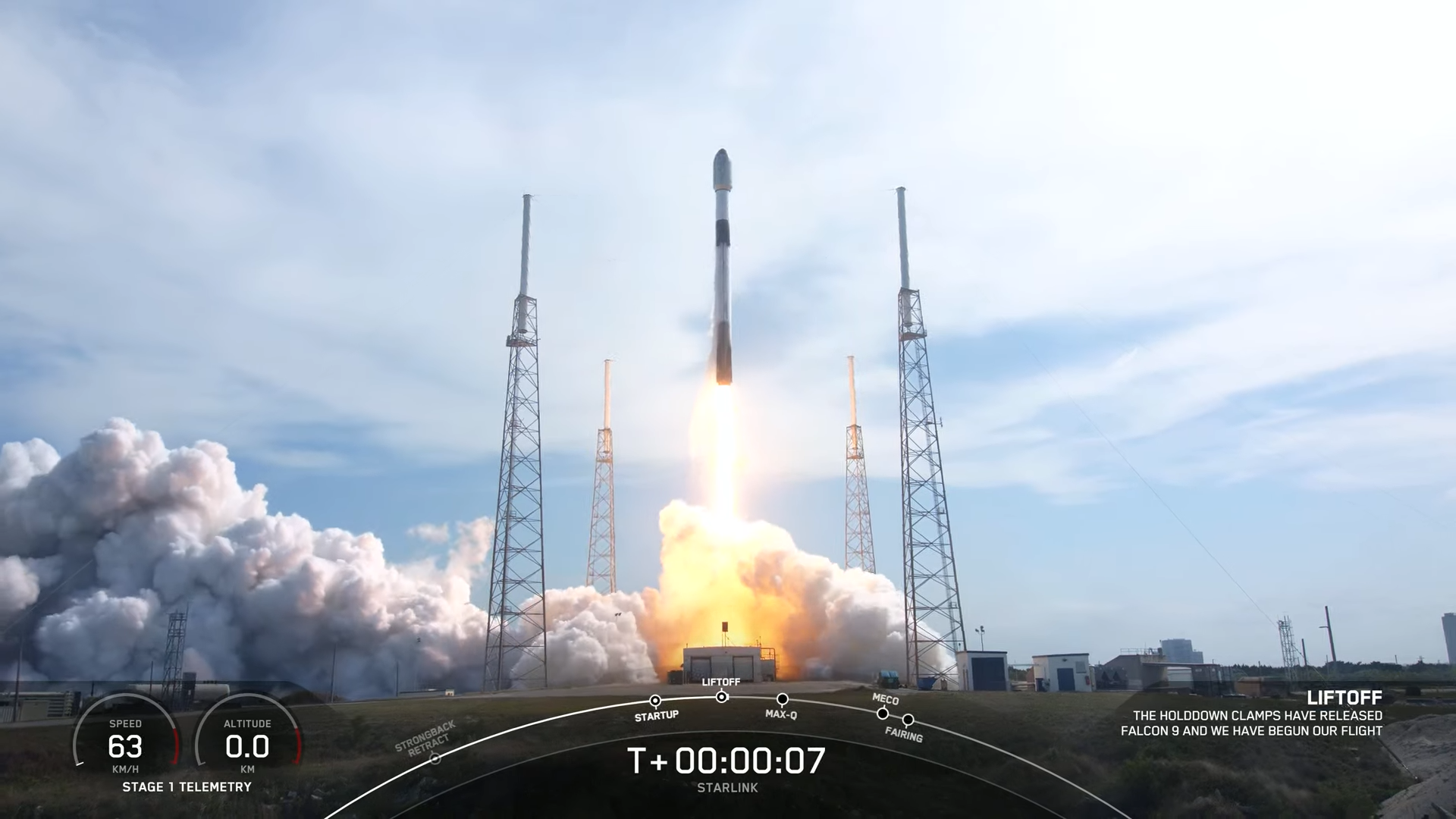
B1077 next launched the Space Force’s GPS III-06 towards Medium Earth Orbit (MEO) in mid-January and the heavyweight Inmarsat-6 F2 geostationary telecommunications satellite only 31 days later in mid-February. All three missions terminated with on-point touchdowns on the ASDS.
Weather conditions for Wednesday’s launch hung around 60-percent-favorable, according to predictions from the 45th Weather Squadron at Patrick Space Force Base. Recovery conditions for the booster were also considered nominal, with a risk of violating the Thick Cloud Layers Rule and Liftoff Winds Rule.

“Despite the southern placement of a surface front Wednesday afternoon, zonal mid-level flow will keep a deck of altostratus clouds lingering across much of the eastern Gulf of Mexico and North/Central Florida into the evening,” the 45th noted in its weather update. “As a result, the main concern for the primary launch window will be the Thick Cloud Layers Rule, followed by Liftoff Winds as a distant second.”
Liftoff winds were expected to reach 17-22 mph (27-35 km/h) with broken altostratus clouds lingering at altitudes from 18,000 feet (5,400 meters) to 22,000 feet (6,700 meters). Conditions were set to improve to around 85-percent favorable in the event of a scrub to Thursday’s backup launch opportunity, with clearer skies predicted.
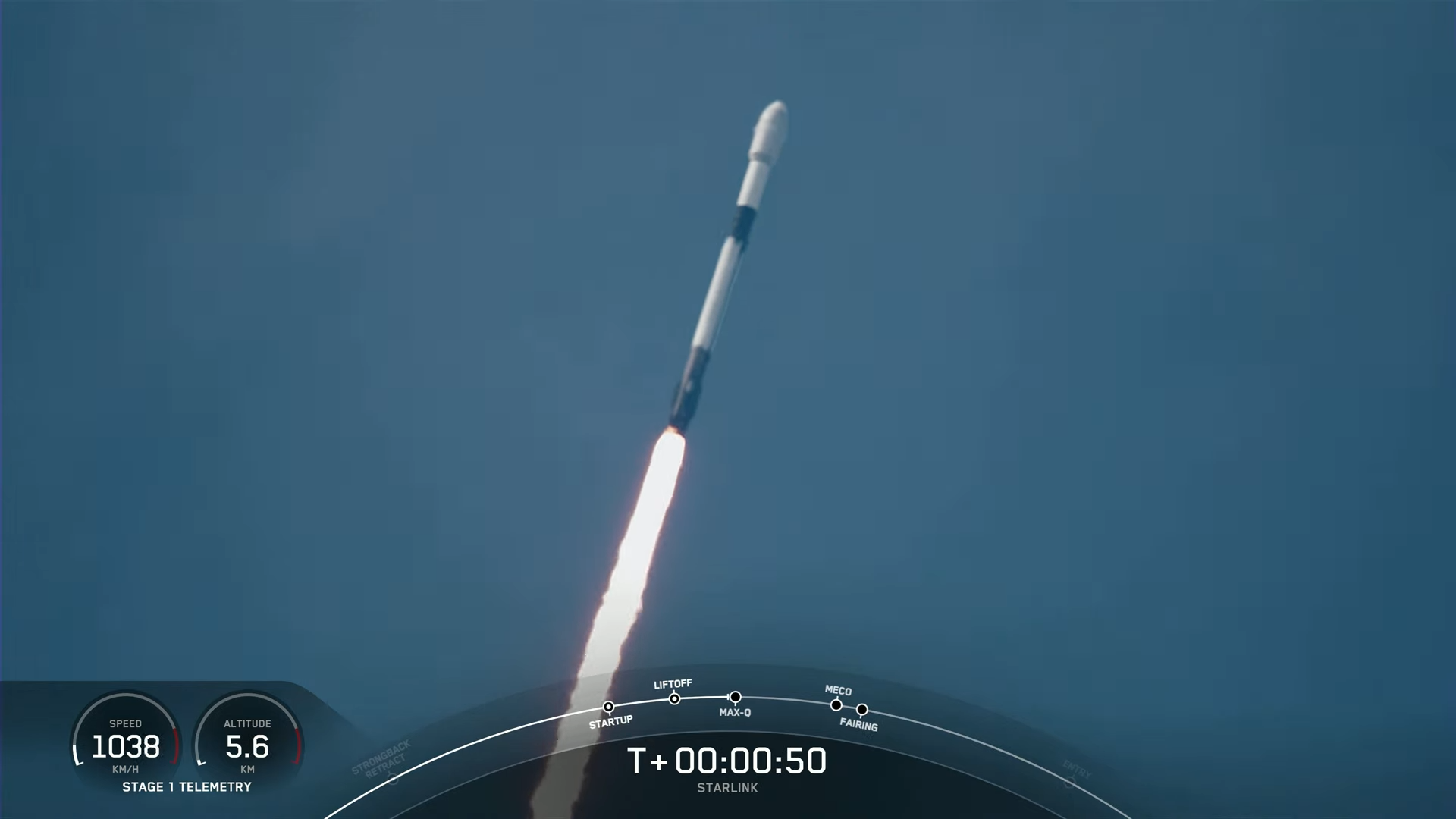
Heading into Wednesday, SpaceX was afforded a raft of three T-0 points to launch B1077: a first at 4:01 p.m. EDT, a second at 5:43 p.m. EDT and a third at 7:22 p.m. EDT. The mission soared uphill precisely at the first attempt, the nine Merlin 1D+ engines at the booster’s base pushing the 230-foot-tall (70-meter) Falcon 9 aloft under 1.5 million pounds (680,000 kilograms) of thrust.
B1077 separated from the stack about 2.5 minutes into ascent and executed a well-trodden path of Entry and Landing Burns. Guided by hypersonic grid-fins, she alighted smoothly on the ASDS deck some 8.5 minutes after liftoff.

Meanwhile, the single Merlin 1D+ Vacuum engine of the rocket’s second stage ignited for a standard six-minute “burn” to deliver the 56 Starlinks towards low-Earth orbit. Deployment of the satellites was slated to occur about 64 minutes into the flight.
This will bring the total number of these flat-packed satellites delivered to space so far this year to 552. And with the satisfactory completion of today’s launch, a grand total of 4,215 “production-design” Starlinks have flown on 78 dedicated Falcon 9 flights since May 2019.

Starlink now facilitates high-speed and low-latency internet provision across more than 50 sovereign nations and international markets, spanning North and South America, Europe, Asia, Oceania and Africa. Last month alone, Iceland, the Philippines—Starlink’s first client in South East Asia—and Rwanda officially signed up to the network, with Haiti inking its participatory credentials in March.
But of notable significance, today’s launch marked the first occasion that SpaceX has launched an eighth mission within a single calendar month. Hopes of reaching this figure in January and February were thwarted by weather and technical issues, as well as delays associated with the high-priority Crew-6 mission.
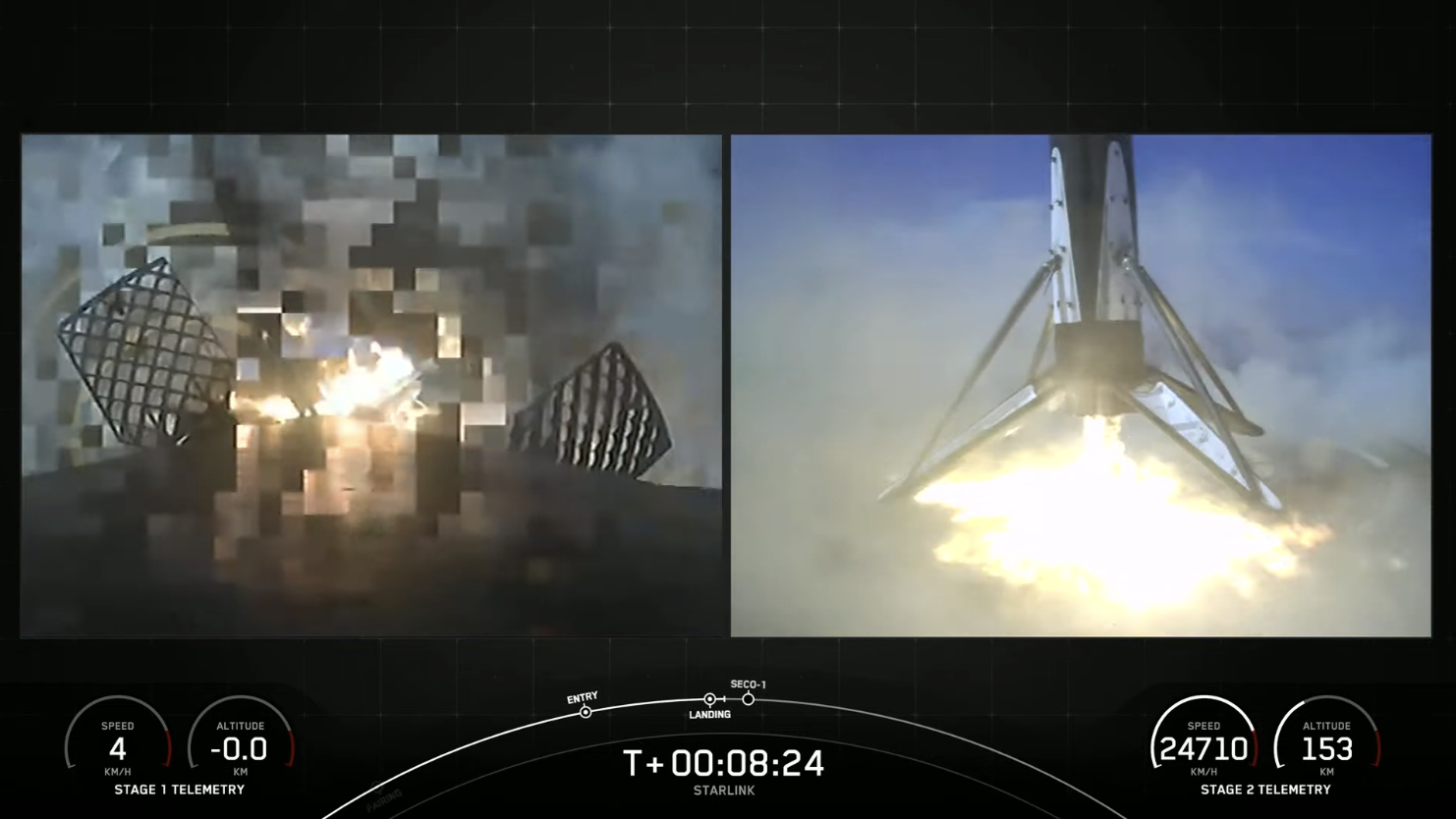
Having flown its first successful Falcon 9 booster way back in June 2010, SpaceX achieved its first two-launch month in September 2014. It flew three times in a calendar month for the first time in June 2017, before advancing to four in November 2020, five in December 2021 and six and seven last April and December, respectively.
However, March may end not on eight launches, but on nine, as attention now turns to Space Launch Complex (SLC)-4E at mountain-ringed Vandenberg Space Force Base, Calif., where another Falcon 9 booster awaits liftoff as early as tomorrow morning. This will be the initial launch of “Tranche 0” of the Transport and Tracking Layer (TTL) for the Space Development Agency (SDA).
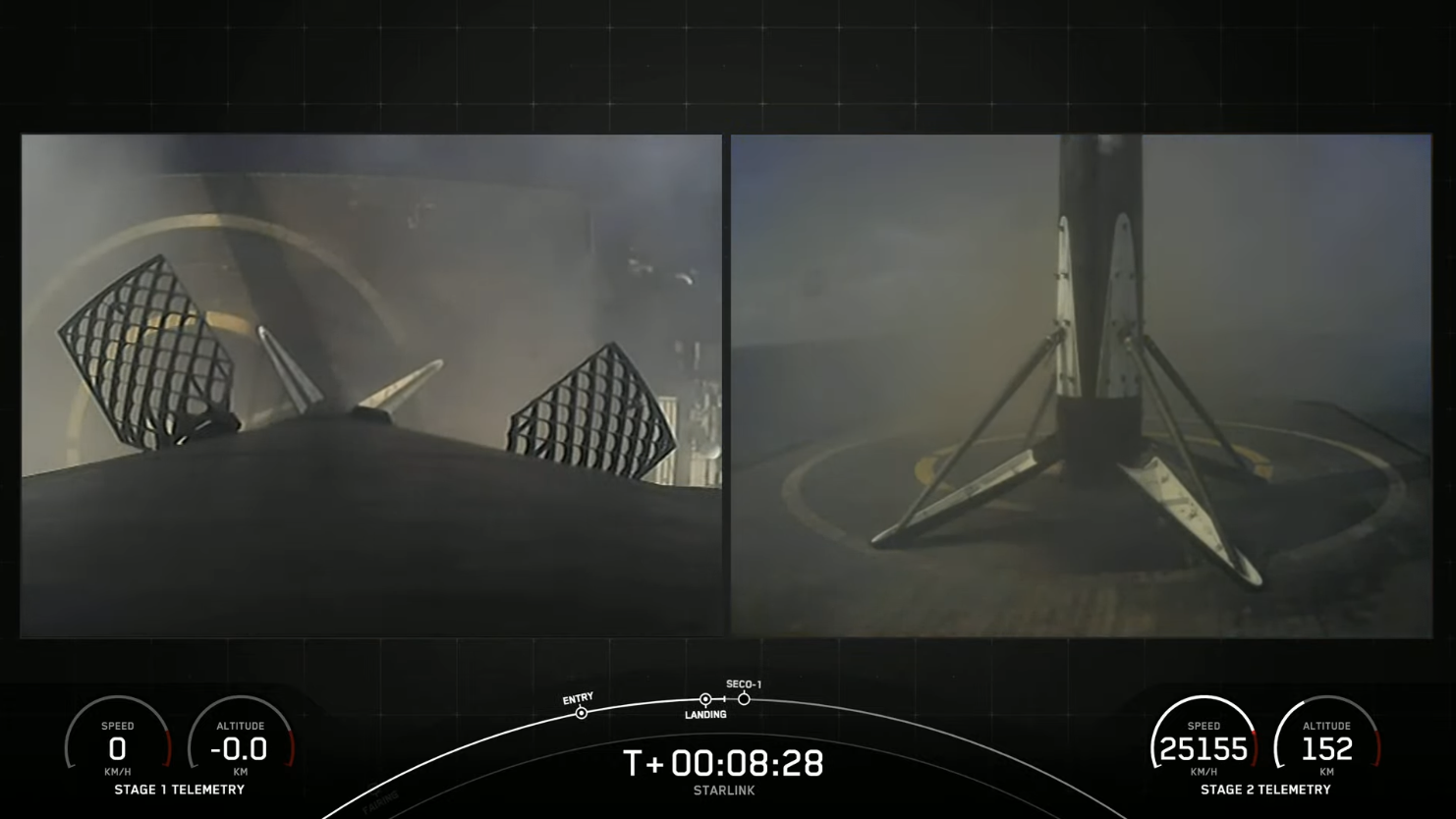
Tranche 0 forms the basis of an eventual “constellation” of 300-500 low-orbiting experimental satellites to furnish ground-based warfighters with “assured, resilient, low-latency military data and connectivity worldwide” and Wide Field of View (WFOV) sensors for infrared missile tracking. Launch services contracts for Tranche 0 were signed with SpaceX in January 2021 at an estimated total value of $150.45 million.
If this mission does indeed fly tomorrow, it will close out 2023’s first quarter with no fewer than 22 launches. It took SpaceX until the end of May to achieve 22 flights last year and, indeed, not until as recently as 2020 did SpaceX first achieve more than that number of flights in an entire calendar year. And 22 launches at the end of 2023’s first quarter raises the prospect of more than 80 missions before the New Year’s Eve bell next tolls, if one extrapolates forward based on the numbers so far.




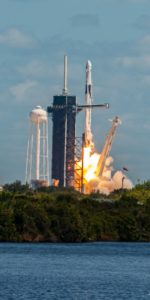

9 Comments
9 Pings & Trackbacks
Pingback:SpaceX Launches Inaugural Tranche 0 Mission for SDA, Kicks Off Busy April - AmericaSpace
Pingback:SpaceX Flies Hosted Mission for Intelsat & NASA, Heads for Year’s 25th Mission - AmericaSpace
Pingback:SpaceX Watches Weather Ahead of Weekend CRS-28 Launch - AmericaSpace
Pingback:SpaceX Watches Weather Ahead of Weekend CRS-28 Launch - Techy Brisk
Pingback:SpaceX Prepares for Record-Setting Night of Florida Launches - AmericaSpace
Pingback:50th Falcon Mission of 2023 Flies, Falcon Heavy Realigns for Friday Night Launch - AmericaSpace
Pingback:SpaceX Begins August, Reflects on Quarter-Millennium of Launches - AmericaSpace
Pingback:SpaceX Heads for Record-Setting Year, Launches 250th Successful Falcon 9 Mission - AmericaSpace
Pingback:SpaceX Flies Year’s 60th Falcon 9 Mission, Looks Back on Record-Setting 2023 - AmericaSpace